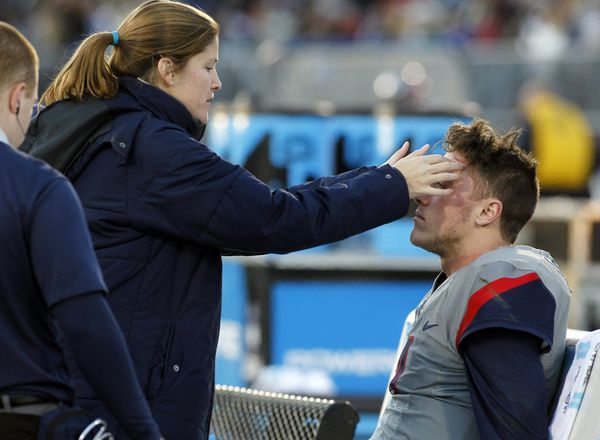
On Tuesday’s edition of HBO’s Real Sports, Karl Kapchinski, who spent 31 years as Texas A&M’s athletic trainer, said he sometimes returned players to the field before they were fully recovered because of pressure from head coaches.
Kapchinski’s kicker: “There’s been a lot of great quality athletic trainers that have subsequently lost their jobs because they stood up for the players or were doing the right thing.”
Probably worth noting here that A&M’s former athletic director, Eric Hyman, relieved Kapchinski of duty in the fall of 2013. Since his dismissal, Kapchinski has sued A&M, citing age discrimination. At 56, no less.
Anyway, given the circumstances, a skeptic could argue that Kapchinski was simply grinding his ax on a national stage.
Except his story isn’t exactly an aberration.
As one long-time athletic trainer put it to me, “It’s a dirty little secret.”
Multiple national surveys, including one last fall, indicate that more than half of athletic trainers, or ATs, have felt the pressure Kapchinski cited. As you might imagine, the percentage is greater in cases where ATs report directly to someone in the athletic department, which, unfortunately, is the overwhelming majority.
According to a 2015 survey by Sports Medicine Research, of ATs responding from 530 institutions across all three NCAA divisions, only 63 report to a doctor instead of a coach or athletic director. Which is an important distinction when it comes to who’s supervising these ATs, because in all my years wandering around coaches’ offices, I never saw any decorated with medical certificates.
Basically, what we don’t need is 1.) coaches playing doctor or 2.) coaches evaluating medical personnel.
If we’ve learned anything about coaches and leagues and owners in general, it’s that most haven’t always had the best interests of the athletes at heart. It’s not so much that they didn’t care; it’s what they didn’t know. Or didn’t want to know.
The majority got religious about safety issues with athletes only at the point of a lawsuit. Only when the NFL reluctantly took the lead on concussion protocols, in particular, did colleges and high schools follow.
All this time, the best friend you or your hero or son or daughter ever had on a playing field was an AT.
The good news is that just last month, the “power five” conferences passed a rule giving athletic trainers full autonomy in deciding when an athlete returns to play. The Big 12 pushed for its passage, in fact.
For a little perspective, the NCAA’s chief medical officer called it “the most important piece of legislation in the history of the NCAA.” Let’s hope it lives up to the billing, removing coaches from the evaluation process and prompting a trickle-down effect all the way to your local junior high.
Surely you can see how a coach could have a vested interest in returning a good athlete to play as soon as possible. The greater the stakes, according to the Sports Medicine Research survey, the better the probability that a coach intercedes where he shouldn’t.
Consider a 2013 report from The Chronicle of Higher Education about the Pirate, Mike Leach. Maybe you remember that his termination at Texas Tech was precipitated by a little dust-up over the treatment of a player, Adam James, who’d been diagnosed with a concussion. Seems that at his new job at Washington State in 2011, Leach clashed with Bill Drake, the AT, over how fast he was clearing concussions. Before the 2012 season, they’d averaged a dozen a year. When the number jumped to 21 in ’12, the coaching staff grew concerned, you might say.
Drake attributed the bump to increased awareness among both players and coaches. But sources told the Chronicle that Leach’s staff thought ATs were simply too soft on players.
Bottom line: Washington State and the Pac-12 cleared Leach of any wrongdoing, and Drake moved over into administration.
If you haven’t heard many stories like Drake’s or Kapchinski’s, it’s probably because you don’t know any ATs. Loose lips, and all that. They kinda like their jobs, and they’d like to keep them.
But we would be wise to remember the words of Scott Sailor, president of the National Athletic Trainers Association, in crediting the power five for acting on their recommendation.
“It really is all about the athletes,” he said.
And for the record: Don’t take any of this to mean that all coaches are bums or that I don’t like them. Some of my best friends are coaches. My daughter even dates one. If that’s not objectivity, I don’t know what is.

